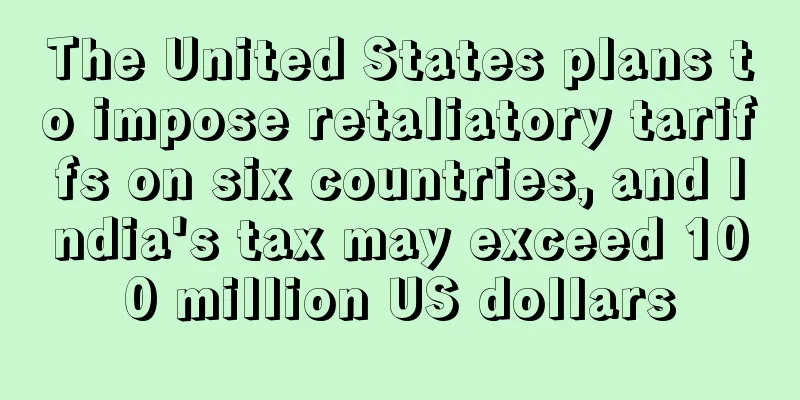Suspended flights and full cabins! Many routes have seen price increases of over 100%

|
Now is the end of the year shipping period, many companies want to ship as soon as possible in order to collect payments, but with the ongoing Red Sea crisis, many shipping routes are out of stock, and it may be difficult to find a box. Nowadays, the freight rates from Shanghai to Europe and the East Coast of the United States are rising sharply, and the freight rates will continue to rise in the second half of January.
Prices of many routes such as Europe and the United States have skyrocketed
As the Red Sea crisis intensified, shipping prices saw a sharp rise, affecting not only European routes but also the US and other routes. For a time, the market was full of "prices rising".
In the first week of 2024, the Shanghai Export Container Freight Index rose, up 137.07 points from the previous week to 1896.65 points, a weekly increase of 7.79% and a monthly increase of 83.75%.
European routes and Mediterranean routes increased by 6.57% and 3.7% respectively . However, in the past two weeks, the spot freight rates of containers from Asia to Europe have risen significantly. Drewry reported that the price of the Shanghai-Rotterdam route has increased by 115% compared with two weeks ago , and the Shanghai-Genoa transaction has increased by 114%, both of which have increased by more than 100%.
Industry insider Dawei said that the average price of container in the European market was about 2,500 yuan last year, and now it has exceeded 5,000 yuan in January 2024. The price has doubled and is still rising. On the US line, the average price of container was about 1,800 yuan last year, and now the market price is nearly 3,000 yuan. Another freight forwarder said that the current market is full of price increases, whether in Europe or the US, prices have been soaring.
The Red Sea crisis has caused a large number of fleets to detour the Cape of Good Hope, increasing voyage distances and costs. Freight rates in the Red Sea, Mediterranean, North Africa and Europe, which are directly affected, have risen accordingly.
It is worth noting that the seemingly unrelated US route has also seen a sharp rise. And the increase in Shanghai export container freight rates in the first week of 2024 was mainly on the US route. The Shanghai-US East Coast route increased by 10.45%, and the Shanghai-US West Coast route increased by 8.7%. There are reasons behind the sharp rise in the US route.
First, in order to avoid the blockage of the Panama Canal, some cargo ships will change their route to the Suez Canal. Now they either have to go around the Cape of Good Hope or go back to the Panama Canal and queue up for passage, which greatly reduces the effective shipping capacity.
Second, many shipping companies did not make money last year. Not long ago, the general consensus in the industry was that the container shipping industry would face tens of billions of dollars in losses in 2024. Now that the Red Sea crisis has come , it seems reasonable for shipping companies to take the opportunity to raise prices.
Third, the current Red Sea crisis cannot be resolved in a short time. The detours around the Cape of Good Hope on the European and US East Coast routes have caused confusion and delays in shipping schedules . According to Flexport data, the voyage around Africa takes 25% longer. The Red Sea crisis will also lead to container shortages and port congestion. It is understood that a leading shipping company has already placed orders with container manufacturers, and it is said that the orders of container manufacturers have been scheduled until March . There are also container trading companies that react quickly and immediately pay the container manufacturers for fear that the container manufacturers will cancel their orders.
The above three reasons have led to a continuous rise in US shipping rates. Some logistics professionals in the industry have described that the US market, which was originally sluggish, has suddenly become agitated, and great fortunes have arrived. Moreover, with the uncertainty of the crisis, the "once-in-three-years" great fortunes in the container shipping industry may not be a dream.
The cabins are full, and prices continue to rise in late January
Not only have freight rates continued to soar, but as shipping companies have detoured, containers are in short supply. Some freight forwarders are saying that all the space in early January has been fully booked, and only a few shipping companies have updated their quotations for late January . It is expected that the shortage of containers will be even more serious in mid-to-late January.
Taking the large ship schedule on the Shenzhen Yantian Port European route as an example, there are currently empty sailings on January 8, January 15, January 17, January 18, January 22 and January 25.
Ships are delayed in transit as they go around the Cape of Good Hope, and there will be a continued shortage of shipping capacity in the coming weeks . Some freight forwarders predict that shipping prices will continue to rise sharply after January 15. According to updated quotations, small containers will rise by about $600, and large containers will rise by about $1,000, with an overall increase of $500 to $1,000. At the same time, space is tight and the shortage of containers will become more serious.
CMA CGM has issued an announcement, announcing that it will increase the FAK rate for exports from Asia to Northern Europe and the Mediterranean region again from January 15 (loading date).
Prior to this, after the latest attack, CMA CGM had announced a significant increase in freight rates, with the freight rate for a 40-foot container between Asia and the West Mediterranean rising from US$3,000 to US$6,000, doubling the price!
Danish shipping giant Maersk announced that all of its ships will no longer pass through the Red Sea and warned customers to prepare for severe supply disruptions. The rerouting means that ships will have to go around southern Africa, which may add about 10 days to shipping time and require more fuel, resulting in increased transportation costs. According to statistics, the total number of Maersk ships that will detour this time will exceed 170.
In addition , the surcharges for sailings around the Red Sea and the Gulf of Aden, the peak season surcharges and the emergency response surcharges announced by Maersk on January 1st still apply to all cargo on the disrupted vessels. It is so difficult for cargo owners!
Due to concerns about risks, many foreign trade companies are considering postponing shipments. One foreign trade company has nearly 20 containers on hold, but the current price of sea freight continues to rise, which is bound to impact the profits of many companies.
The company will definitely bear the loss of freight rate increase. A shipper shipped four containers from China to Morocco, and the current quote is more than 100,000 yuan different from that in early December last year. A freight forwarding company reported that the price of sending a container was previously US$2,300-2,400, but now it is conservatively estimated to be around US$6,500.
Affected by the Red Sea crisis, the demand for China-Europe freight trains has further increased and prices have also risen.
Due to time delays and a sharp increase in freight rates, many customers who originally chose sea transportation have begun to consider China-Europe trains. It is understood that since the Red Sea crisis, CEVA's China-Europe land transport volume has increased by about 30%.
At present, the prices of some trains have increased. For example, the train from Wuhan to Hamburg has increased from 3,500-4,000 US dollars to 4,500-5,000 US dollars, and the train from Chengdu to Mala, Poland has increased from more than 3,000 US dollars to more than 5,000 US dollars. It is expected that the prices of China-Europe trains will continue to rise in the future as the cost of ocean shipping increases.
Red Sea crisis reaches turning point
However, the Red Sea crisis that has worried major shipping companies seems to have reached a turning point. And the future shipments of cross-border sellers may not be as bad as imagined.
On January 7, a senior leader of the Houthi armed forces issued a statement saying that as long as ships passing through the Red Sea declared that they had "no relationship with Israel", they would not be attacked.
The Houthis even gave specific instructions for safely passing through the Bab el-Mandeb Strait. However, the Houthis also warned that if a ship issues a "false notification" and goes to an Israeli-controlled port after passing through the Red Sea, it will be "blacklisted" and detained the next time it attempts to pass through the Red Sea. Domestic shippers can breathe a sigh of relief!
In addition, cross-border sellers will have other options for shipping at the end of the year. As Dawei said, the logistics market is always determined by the market volume. With the Spring Festival holiday, the market shipment volume will decrease, and in addition to sea transportation, people will also use channels such as trucks and air delivery. Therefore, the overall shipping market freight rates in 2024 may not fluctuate significantly. route Price increase |
Recommend
With monthly sales of 100,000 US dollars, sellers are "powerfully cheating" in this tomorrow's market!
2021 has just passed, and cross-border sellers of...
New rules for self-delivery are coming again, and these products may lose sales rights...
Under the same roof of Amazon, whether you are an...
What is Onedrop? Onedrop Review, Features
Onedrop provides customers with a holistic soluti...
What is Nubank? Nubank Review, Features
Nubank was founded in 2013 and is a digital finan...
Hot sales changed fate! Entered the popular track and won the first place in the category
In recent years, with the development of the econ...
To save the US popularity! Temu spent tens of millions of dollars to appear in the Super Bowl again
Confirming previous news, Temu will appear again ...
The TOP 10 Southeast Asian e-commerce platforms in 2020 are released, and Vietnam accounts for half of them!
According to a report released by Malaysian marke...
What is Barneys New York? Barneys New York Review, Features
Barneys New York is a world-renowned high-end depa...
What is Shenzhen Yapeng International? Shenzhen Yapeng International Review, Features
Shenzhen Yapeng International (Shenzhen Yapeng Uni...
Out of stock warning! Multiple Amazon warehouses are out of stock
As expected, the warehouse was liquidated again d...
TikTok launches new shopping ads feature
Recently, TikTok announced that it will launch a ...
What is Fenmiao Network (openinstall)? Fenmiao Network (openinstall) Review, Features
openinstall is affiliated to Shenzhen Fenmiao Net...
What is GoldenBell? GoldenBell Review, Features
GoldenBell is a product of Yinghua Ark, providing ...
What is Huaxing International Express? Huaxing International Express Review, Features
Huaxing International Express is a modern professi...
What is Vlinkton E-Warehouse? Vlinkton E-Warehouse Review, Features
Shenglingtong Cloud Warehouse (Shenzhen Shengling...









